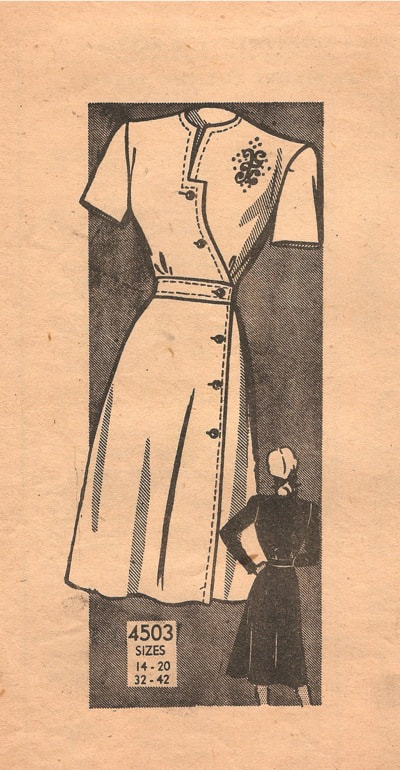|
While I was researching my Anne Adams pattern (Anne Adams 4882), I found myself on the Vintage Patterns Wikia. They did not have an entry for my exact pattern, but they had quite a few other patterns by the same company. I started clicking through, delighting in the inspiration. After all, now that I know I can make my own, perfectly fitting patterns from my sloper, I can make any of those, and not need to buy patterns for them! Wow! Today's post will be a collection of Anne Adams inspiration pictures... things I'd like to make or learn from, as well as some thoughts about the internet. I do not own these pictures; they were made available on the Vintage Patterns wiki by other folk, for the purposes of study and inspiration, which is exactly how I'm using them. WHAT'S A WIKI? A WIKIA? In 1990, a website called the WikiWikiWeb was started to enable computer programmers to share and discuss software design. It was user-editable, and was the first such website ever. The name came from the Hawaiian language: "wiki" means "quick"; the website developer knew it from once taking the Honolulu airport shuttle, called the "wiki wiki bus". Anyway, the word "wiki" passed into internet parlance to refer to any website where the users can also be content creators. "Wikia" is an organization (formerly WikiCities) that hosts various wikis, including the Vintage Pattern one. While I'm on the topic of Internet Meta Musings... does anyone else remember when hyperlinked text online was blue? But once you'd clicked it, it turned gray (at least until you cleared your internet history, then links would all be blue again)? I liked that feature. It made going through long lists so much easier, since you could tell at a glance which paths you'd followed already. As I was going through the Vintage Patterns list of pages for Anne Adams, I was quite annoyed whenever I clicked the same link twice! WHAT I LEARNED
Let's talk about the dog-leg closure. In the Victorian era, many dresses closed with what looks to us a strangely complicated zig-zag: the front might button, lace, or hook closed right down the center, for instance, but at the waist the opening would take a turn, to the side hip, and close the skirt with a placket. This is now called a dog-leg closure. I don't know what they called it in its time. Anyway, we never see such a thing in today's clothing, but I saw a few examples of dog-leg-inspired closures in Anne Adams' 1944 catalog! The biggest difference is that Victorian dog-leg closures were not obvious when worn, while this zig-zag is highlighted with buttons and trim. MEANWHILE, BACK ON THE VINTAGE PATTERNS WIKI... Cognizant of how much I have benefited from the freely-given research and resources others post, I made a page on the wiki for my pattern. I titled it "Anne Adams 4882 B"; now others can learn from the pattern just as I have!
1 Comment
The Sistert
1/13/2020 11:59:23 am
I like the dog-leg closure too, and echo your sentiments about "where did all the creativity go?". My guess is that mass production killed it.
Reply
Leave a Reply. |
Karen Roy
Quilting, dressmaking, and history plied with the needle... Sites I EnjoyThe Quilt Index Categories
All
Archives
March 2024
|








 RSS Feed
RSS Feed